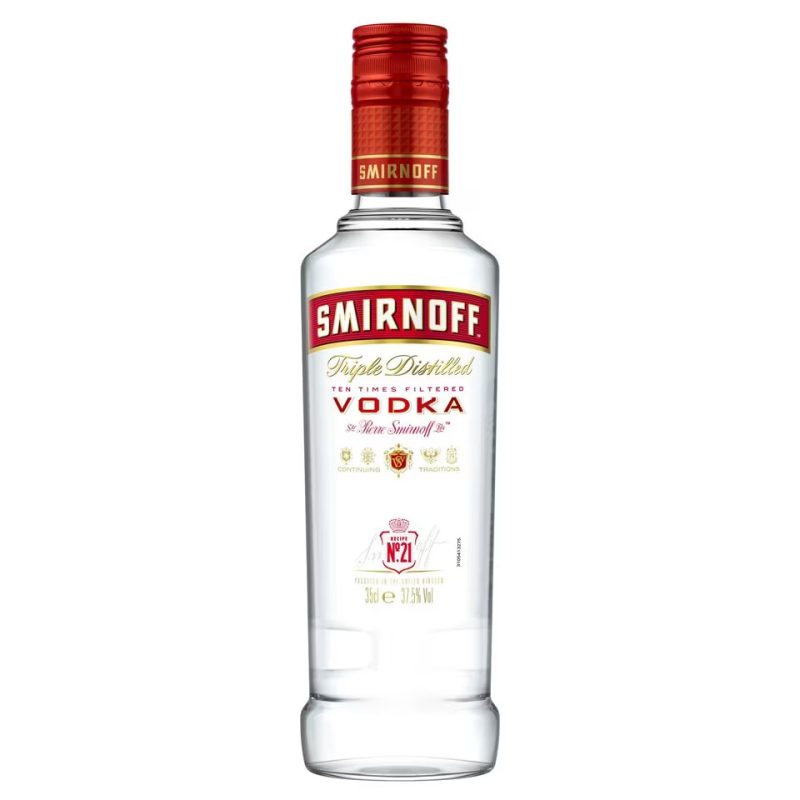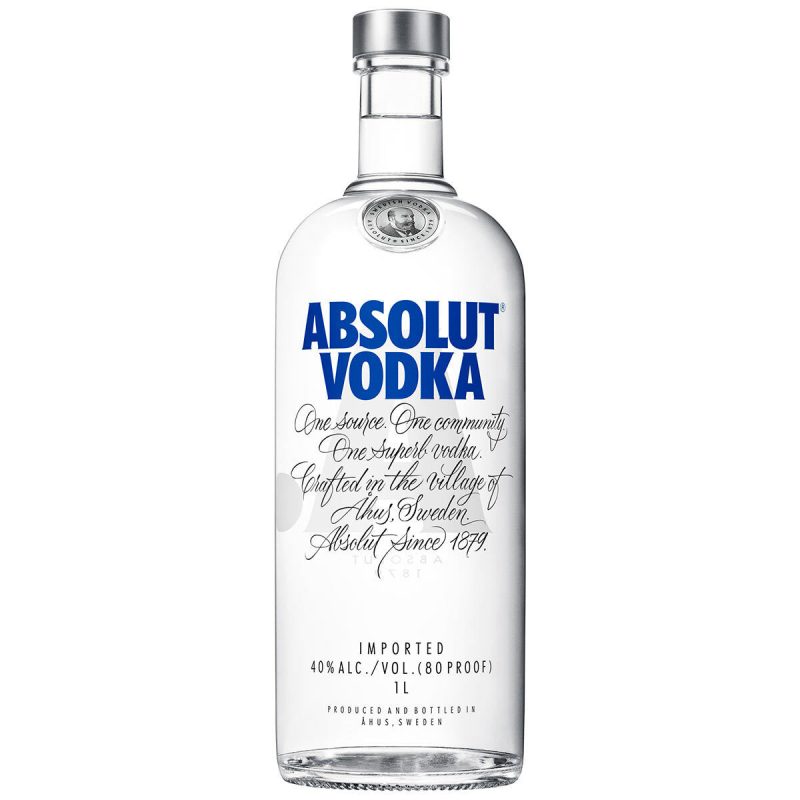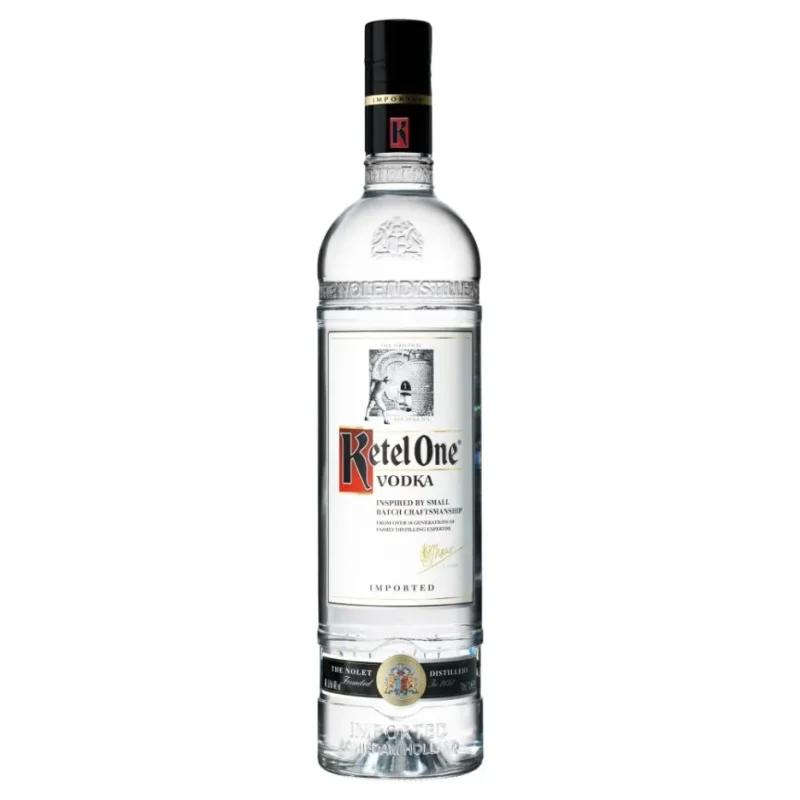Vodka - a versatile, clear spirit that has won over the hearts of many. From classic martinis to Moscow mules, vodka has become a staple in almost every liquor cabinet. But have you ever wondered what exactly makes this simple and elegant spirit so popular? Let's take a deep dive into the fascinating world of vodka, its origins, production process, and the factors that contribute to its globally renowned status.
Best Budget Vodkas Ranked
What Does Vodka Come From Table of Contents
Looking For The Best Vodka? You'll Love These Vodka Guides...
A Brief History of Vodka
Vodka, a popular spirit known for its neutral taste, has roots that can be traced back to Eastern Europe. Though the exact origins of vodka are still debated, it is generally agreed upon that it was first produced in Russia or Poland during the Middle Ages.
The name vodka is derived from the Slavic word "voda," which means "water." This nod to the spirit's clear, crisp nature is no coincidence. The first vodkas were primarily consumed for their medicinal qualities and were often used as a remedy for various ailments.
As vodka production spread throughout Europe in the 16th and 17th centuries, it became an essential part of the cultural fabric, not only as a medicine but also as a social libation.
Today, vodka is one of the most consumed spirits in the world. Its versatility, adaptability, and smooth taste have made it a favorite for cocktail enthusiasts and spirit aficionados alike.
What is Vodka Made From?
One of the main factors contributing to vodka's unique character is the choice of its base ingredient. Vodka can be made from a wide range of fermentable materials, most commonly:
- Grains, such as wheat, rye, and corn
- Potatoes
- Sugar beet molasses
- Fruits, such as grapes
The base ingredient used has a significant impact on the final taste and character of the vodka. Grain-based vodkas tend to provide a smoother, more neutral flavor, while potato-based vodkas can have a slightly earthy, creamy taste.
Grist to Glass: The Vodka Production Process
The production process of vodka consists of three main stages: fermentation, distillation, and filtration.
Fermentation:
Fermentation is the process by which yeast converts the sugar in the base ingredient into alcohol. A mash is created by combining the base ingredient with water and then heating the mixture to break down the starches and release the sugars. Yeast is then added to the mash, and the fermentation process begins. Once the sugars have been fully converted to alcohol, a liquid called "wash" remains. This wash typically contains between 6-20% alcohol by volume (ABV).
Distillation:
Distillation is the process of separating the alcohol from the wash. This is done using a column or pot still, which heats the wash, creating alcohol vapors that rise and are collected. The process of distillation can be done multiple times to increase the purity and strength of the vodka. This concentrated alcohol is typically between 70-95% ABV.
Filtration:
Filtration is the final step in the production of vodka. During this process, the distilled alcohol is passed through various filters, such as charcoal or activated carbon. This removes any remaining impurities, creating a more refined, neutral taste. After filtration, the vodka is diluted with water to achieve the desired final ABV, typically around 40%.
Variations and Flavors
Vodka is highly adaptable, and producers often add their unique spin to the spirit. With countless variations and flavored options available, there's a vodka for every palate. Common flavorings include fruit extracts, herbs, spices, and even savory flavors like bacon or smoked salmon.
How to Enjoy Vodka
Vodka's clean, neutral taste makes it ideal for cocktails, as it seamlessly blends with a variety of ingredients. Some classic vodka cocktails include:
- Moscow Mule
- Martini
- Bloody Mary
- Screwdriver
- White Russian
Alternatively, vodka can be enjoyed neat or on the rocks with a twist of lemon or lime. The choice is yours!
What Does Vodka Come From Example:
Check out our easy-to-follow recipe for a classic vodka Martini:
Ingredients:
- 2 oz vodka
- 1/2 oz dry vermouth
- Ice
- Olives or lemon twist for garnish
Instructions:
- In a mixing glass, combine vodka and vermouth.
- Fill the glass with ice and stir until well-chilled.
- Strain the mixture into a chilled martini glass.
- Garnish with olives or a lemon twist. Enjoy!
Now that you have a better understanding of what vodka comes from, its rich history, production process, and the many ways it can be enjoyed, you're ready to explore this versatile spirit even further! Be sure to check out other in-depth guides, cocktail recipes, and tasting notes here on Vodka Doctors. And don't forget to share your newfound knowledge and favorite vodka discoveries with friends and fellow spirit enthusiasts. Cheers!
Frequently Asked Questions
What is vodka typically made from?
Vodka is traditionally made from fermented grains such as wheat, rye, or corn. However, it can also be produced from potatoes, grapes, and other sugar-rich plants. The choice of ingredients largely depends on the region and the distiller's preference.
How is vodka produced?
Vodka production involves fermentation of the chosen base ingredient into alcohol, followed by distillation to increase the alcohol content. The resulting spirit is then filtered to remove impurities, and water is usually added to lower the alcohol content to the desired level.
What role does distillation play in vodka making?
Distillation is a crucial process in vodka production as it purifies the alcohol, removing unwanted flavors and impurities. It also concentrates the alcohol content, which is essential for achieving the high purity levels associated with vodka.
Is vodka gluten-free?
Yes, vodka is gluten-free, especially if it's made from non-grain ingredients such as potatoes or grapes. Even when made from grains, the distillation process removes gluten proteins, but individuals with severe gluten sensitivity or celiac disease should opt for non-grain based varieties to be safe.
Does the source of the ingredients affect the taste of vodka?
While vodka is known for its purity and lack of distinct flavor, the source of the base ingredients can subtly affect its taste and mouthfeel. Vodkas made from different materials can exhibit unique characteristics attributable to their origin.
What distinguishes premium vodka from regular vodka?
Premium vodka is often distilled more times and filtered through finer materials, which purists believe enhances its smoothness and purity. The quality of ingredients and the craftsmanship of the distiller also contribute to the classification of vodka as premium.
Why is vodka sometimes filtered through charcoal?
Charcoal filtering is a common method used in vodka production to further purify the spirit by removing additional impurities and creating a smoother, cleaner taste.
Can vodka be flavored?
Yes, vodka can be infused with a variety of flavors, ranging from fruits to herbs and spices. This is done either by infusing the actual ingredients during distillation or by adding flavorings to the finished product.
What is the difference between vodka and other spirits?
Vodka is distinguished by its high level of purity and relatively neutral flavor profile when compared to other spirits like whiskey or rum, which have distinct flavors derived from their ingredients and aging processes.
Is there a proper way to taste vodka?
To properly taste vodka, it should be served at a slightly chilled temperature. Take a small sip, let it sit on your tongue to appreciate the texture, and then swallow, noting any lingering flavors or sensations.
How should vodka be stored?
Vodka should be stored upright in a cool, dark place. Unlike wines, vodkas do not age once bottled, so their shelf life is indefinite, and refrigeration is not necessary, though it can be served chilled.
What is the ideal alcohol content for vodka?
The standard alcohol content for vodka is typically around 40 percent by volume (80 proof). However, some vodkas may range between 35-50 percent depending on the brand and market.
Can vodka spoil?
Vodka does not spoil due to its high alcohol content which inhibits the growth of microorganisms. It can retain its quality for years if stored properly.
What are some popular vodka-based cocktails?
Popular vodka-based cocktails include the Bloody Mary, Cosmopolitan, Moscow Mule, Martini, White Russian, and Black Russian, among others.
Does vodka originate from Russia?
Both Russia and Poland claim to have originated vodka, and its history can be traced back to at least the 9th century in Russia and the 8th century in Poland. It's an integral part of the cultural heritage in both countries.
Is vodka consumption limited to specific countries?
No, while vodka is particularly popular in Eastern European countries, its consumption is widespread across the globe, making it one of the most consumed alcoholic beverages in the world.
What is the significance of the vodka belt?
The "vodka belt" refers to the region in Northern, Central, and Eastern Europe where vodka is traditionally the alcoholic drink of choice. This includes countries such as Russia, Poland, Finland, Sweden, and others.
How is vodka served in its traditional culture?
In traditional vodka-drinking cultures, vodka is typically served neat, chilled, and often as part of a toast or with food, particularly with pickles or hearty snacks known as "zakuski" in Russia.
Are there any health benefits to drinking vodka?
While moderate alcohol consumption may have some health benefits, it is important to drink responsibly, as excessive alcohol intake can lead to serious health problems. Vodka, consumed in moderation, is lower in calories compared to other spirits, which may be an advantage for some.
What is the "freeze filtration" process used in some vodkas?
Freeze filtration refers to the process of chilling the vodka to sub-zero temperatures before filtering it, which can remove additional impurities and result in a smoother product.
Can vodka be used for purposes other than drinking?
Yes, vodka has various uses beyond consumption. It can be used as a disinfectant or antiseptic, a cleaning agent for glass and other surfaces, and even as a remedy for certain household problems like removing stickers or freshening fabric.
















